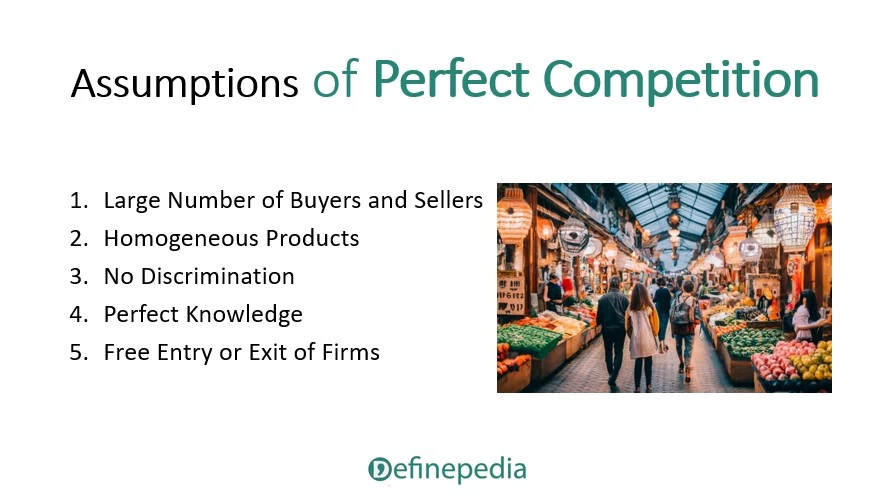Imagine a marketplace crowded with lots of shoppers and tons of sellers, and they’re all selling the exact same thing – no variations, just identical products.
Definition of Perfect Competition
“Perfect competition prevails when the demand for the output of each producer is perfectly elastic.”
Mrs Joan Robinson
Perfect competition is a market structure in which there are a large number of buyers and sellers of an identical product, perfect information, and free entry and exit.
Hal R. Varian
Perfect competition is a market structure in which there are many buyers and sellers, all selling the same product, and there are no barriers to entry or exit.
Paul A. Samuelson and William D. Nordhaus
Perfect competition is a market structure characterized by:
- A multitude of buyers and sellers.
- The sale of homogeneous (identical) products.
- Firms having no control over product pricing.
- Free entry and exit of firms in the market.
- And also have limited product differentiation, potentially leading to a lack of variety.
Long-run Equilibrium in Perfect Competition
In the long run, firms in a perfectly competitive market reach equilibrium when. The price of the product equals the minimum average cost of production.
Resources are allocated efficiently as firms operate at the lowest possible cost, benefiting consumers with lower prices.
Firms may face short-term losses during the process of reaching equilibrium.
Weaknesses of the Perfect Competition Model
While insightful, the perfect competition model has its limitations:
- Provides a simplified framework for analyzing market dynamics.
- Serves as an excellent starting point for economic analysis.
- Real-world firms often differ in size, efficiency, and location, deviating from the assumption of identical firms.
- Barriers to entry and exit, along with imperfect information, can hinder idealized outcomes.
Real-world Examples of Near-Perfect Competition
While true perfect competition is rare, some markets come close:
1. Agricultural Market:
Farmers produce homogeneous crops, with numerous buyers and sellers.
Shares of stock represent a standardized product, with a vast number of participants.
3. Foreign Exchange Market:
Currencies are standardized, and the multitude of traders worldwide resembles a near-perfectly competitive setting.
Assumptions of Perfect Competition

The main assumptions of perfect competition are as follows:
- Large Number of Buyers and Sellers
- Homogeneous Products
- No Discrimination
- Perfect Knowledge
- Free Entry or Exit of the Firms
Large Number of Buyers and Sellers
In a perfectly competitive market, there are a large number of buyers and sellers. This means that no individual buyer or seller has a significant impact on the market price. Buyers and sellers are price takers, meaning that they must accept the market price as given.
Homogeneous Products
In a perfectly competitive market, all firms sell the same identical product. This means that buyers cannot differentiate between the products of different firms. As a result, firms cannot charge a premium for their products.
No Discrimination
In a perfectly competitive market, there is no discrimination between buyers or sellers. This means that all buyers and sellers have equal access to information and resources.
Perfect Knowledge
In a perfectly competitive market, all buyers and sellers have perfect knowledge about the market. This means that they know the market price, the quality of the product, and the production costs of all firms.
Free Entry or Exit of Firms
In a perfectly competitive market, firms can freely enter or exit the market. This means that there are no barriers to entry or exit. If a firm is making a profit, new firms will enter the market, driving down the price and profits. If a firm is making a loss, it will exit the market, driving up the price and profits.
Was this helpful?
0 / 0